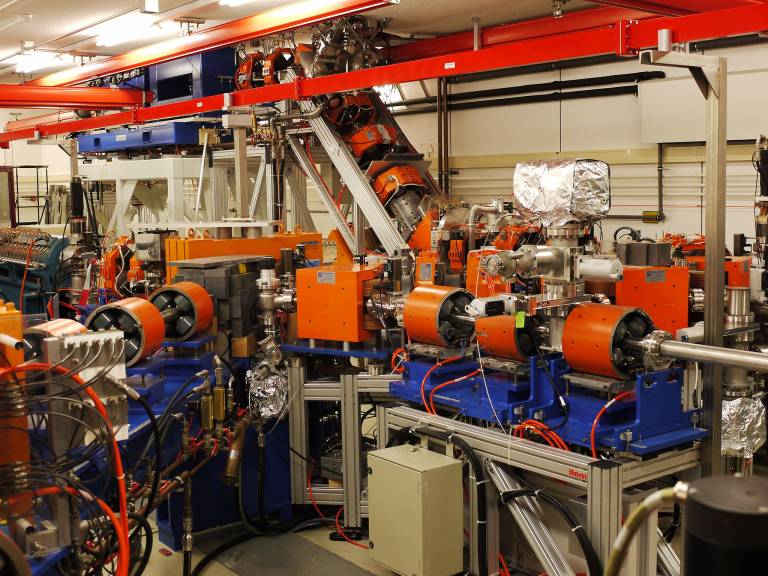Superfast computers a step closer as a silicon chip's quantum capabilities are improved
20 March 2015

Research has demonstrated laser control of quantum states in
an ordinary silicon wafer and observation of these states via a conventional
electrical measurement.
The findings - published in the journal Nature Communications by a UK-Dutch-Swiss team from the University of Surrey, UCL, Heriot-Watt University in Edinburgh, the Radboud University in Nijmegen, and ETH Zürich/EPF Lausanne/Paul Scherrer Institute in Switzerland - mark a crucial step towards future quantum technologies, which promise to deliver secure communications and superfast computing applications. The team demonstrated a quantum on/off switching time of about a millionth of a millionth of a second - the fastest-ever quantum switch to be achieved with silicon and over a thousand times faster than previous attempts.
"Quantum computing exploits the fact that, according to quantum mechanics atoms can exist in two states at once, being both excited and unexcited at the same time. This is known as a superposition state, and is most famously illustrated by Schrödinger's quantum cat which is simultaneously dead and alive" said Dr Ellis Bowyer, one of the Surrey researchers who made the laser measurements.
He added "This superposition of orbital states is very delicate, but we discovered that silicon provides an amazingly clean environment for the phosphorus atoms trapped inside where our quantum information is being stored. We put the atoms into a superposition state with a very short (a few trillionths of seconds) laser pulse from the FELIX laser facility [pictured], and then, we showed we can create a new superposition which depends on the exact time at which a second laser pulse arrives. We found that the superposition state even survives when electrons are flying around the trapped atom while current was flowing through the chip, and even more strangely, the current itself depends on the superposition state".
The team has recently been awarded further funding from the UK EPSRC (Engineering and Physical Sciences Research Council) to investigate how to connect many of these quantum objects to each other, creating the bigger building blocks needed for quantum computers. This next phase of research could enable the creation of fast quantum silicon chips, and other kinds of devices such as super-accurate clocks and ultra-sensitive bio-medical sensors.
"Quantum superpositions and the resulting quantum technologies are only
just beginning to make an impact, but we believe that with new advances in
silicon, it is only a matter of time before it becomes more part of the
everyday. This work brings that time closer by showing that exotic quantum
features, more usually demonstrated with unimaginably tiny things in university
physics labs can also be seen using an ordinary voltmeter," said Dr Thornton
Greenland (London Centre for Nanotechnology at UCL). "What is exciting is that we can see these exotic quantum
phenomena in that most common material, silicon, using a measurement as simple
as that of the electrical resistance".
Thus the time is drawing nearer when we
shall be able to make a computer that does a tremendous number of calculations
simultaneously, and that provides unprecedentedly secure computing, impenetrable
to hackers.
Notes
The research is presented in a paper entitled 'Coherent creation and destruction of orbital wavepackets in Si:P with electrical and terahertz readout', published today in the journal Nature Communications.
Related links
- Paper in Nature Communications
- London Centre for Nanotechnology
- University of Surrey press release
- Felix Laser Facility
High resolution image
The FELIX laser facility. Photo credit: China Crisis/Wikimedia Commons (CC-BY-SA 3.0). This image can be reproduced providing the credit is retained.
Researcher profiles
Science contact
Thornton Greenland
London Centre for Nanotechnology
p.greenland@ucl.ac.uk
Media contact
Oli Usher
UCL Faculty of Mathematical and Physical Sciences
020 7679 7964
o.usher@ucl.ac.uk
 Close
Close




